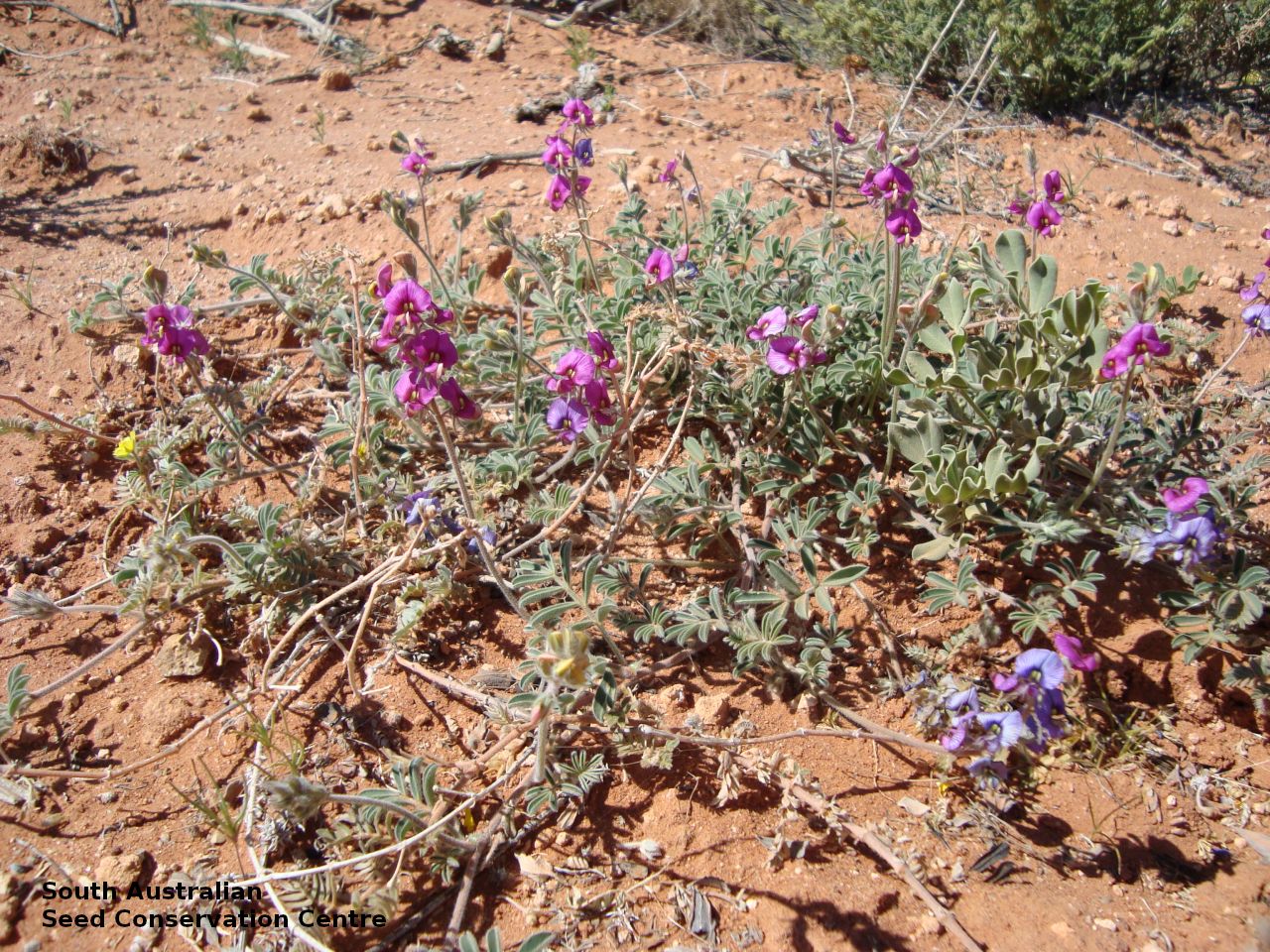
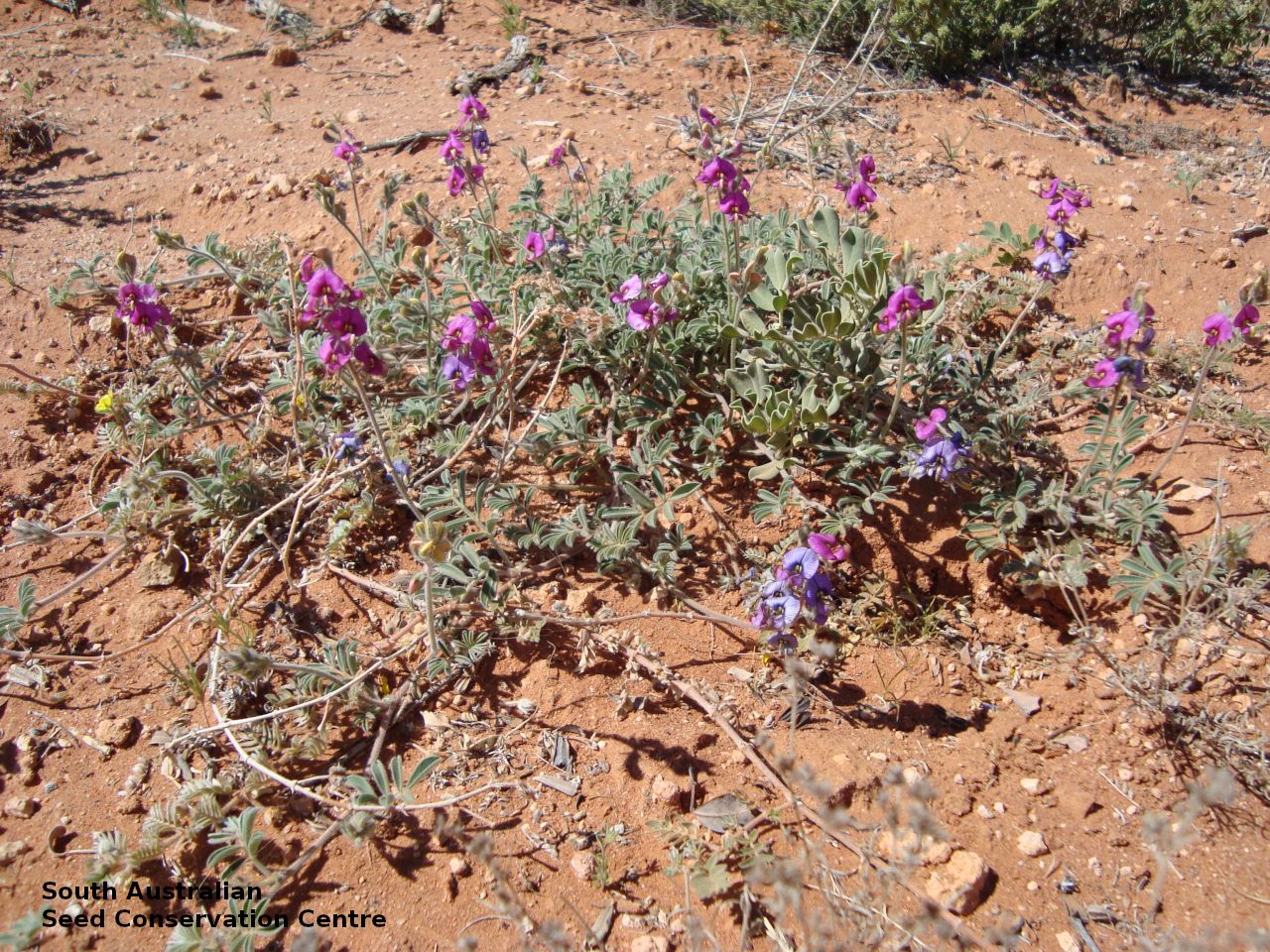
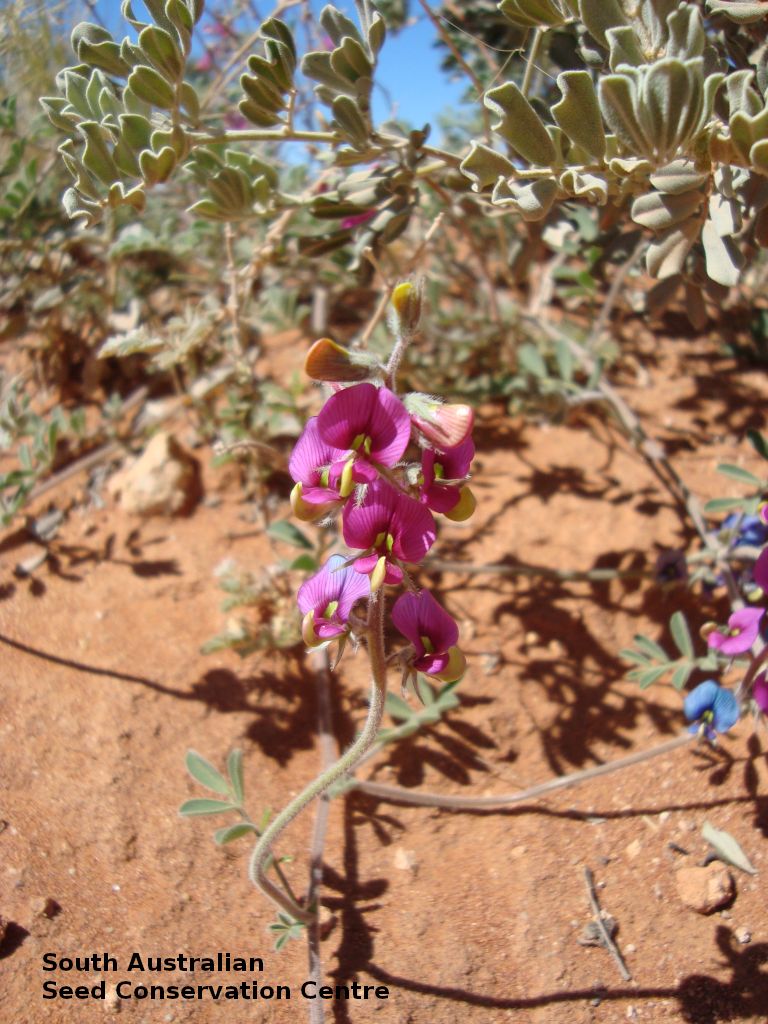
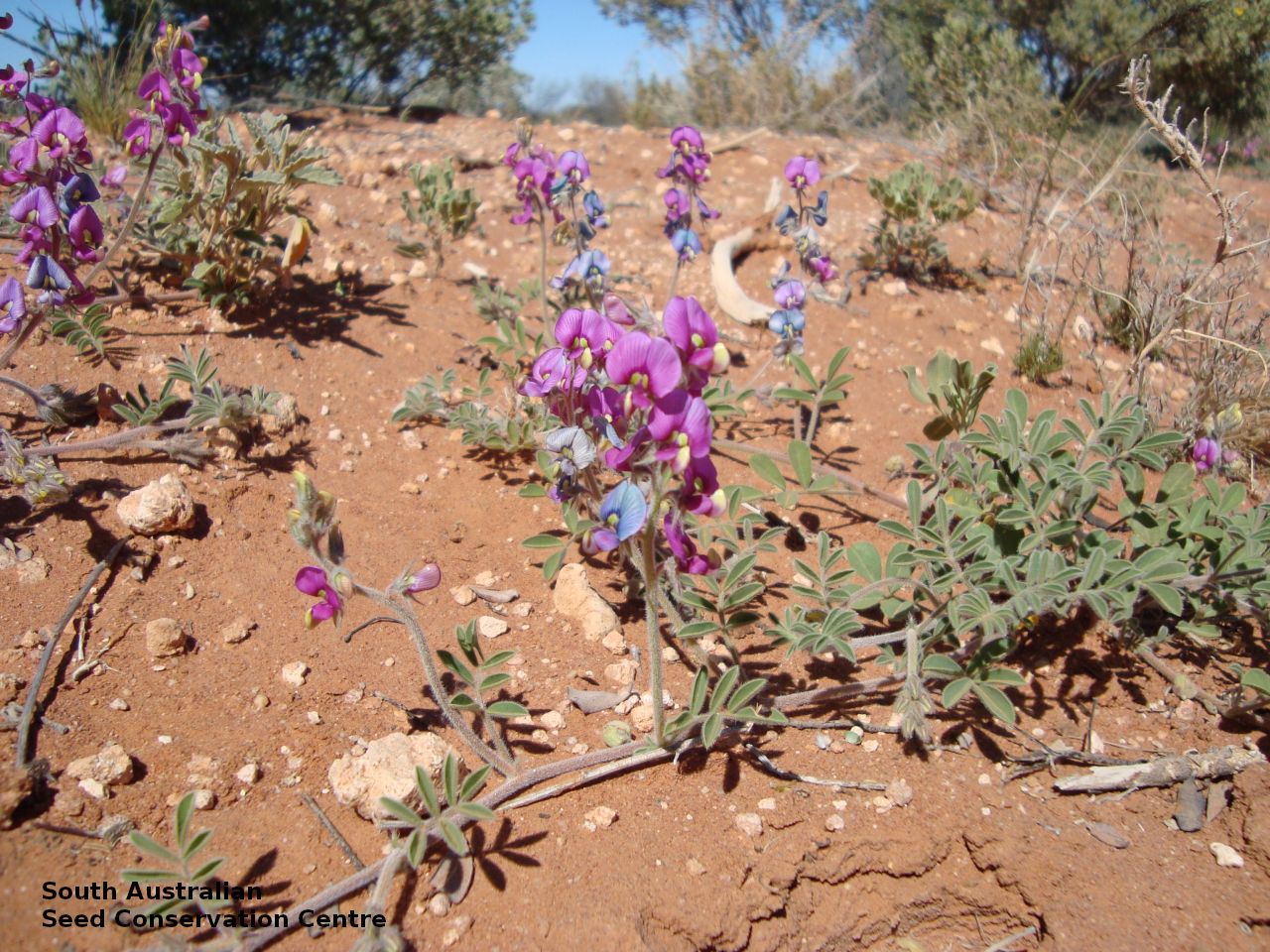
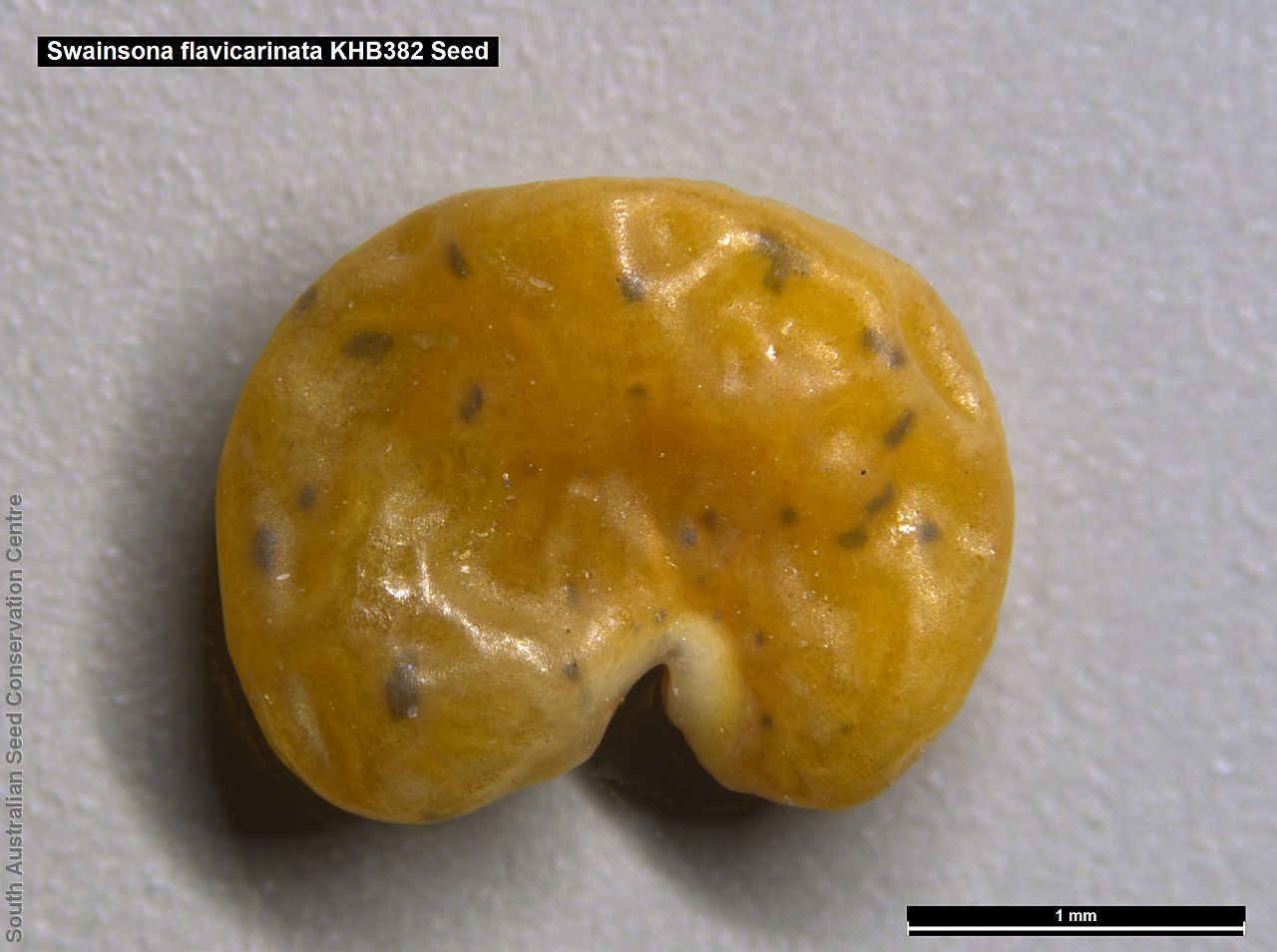
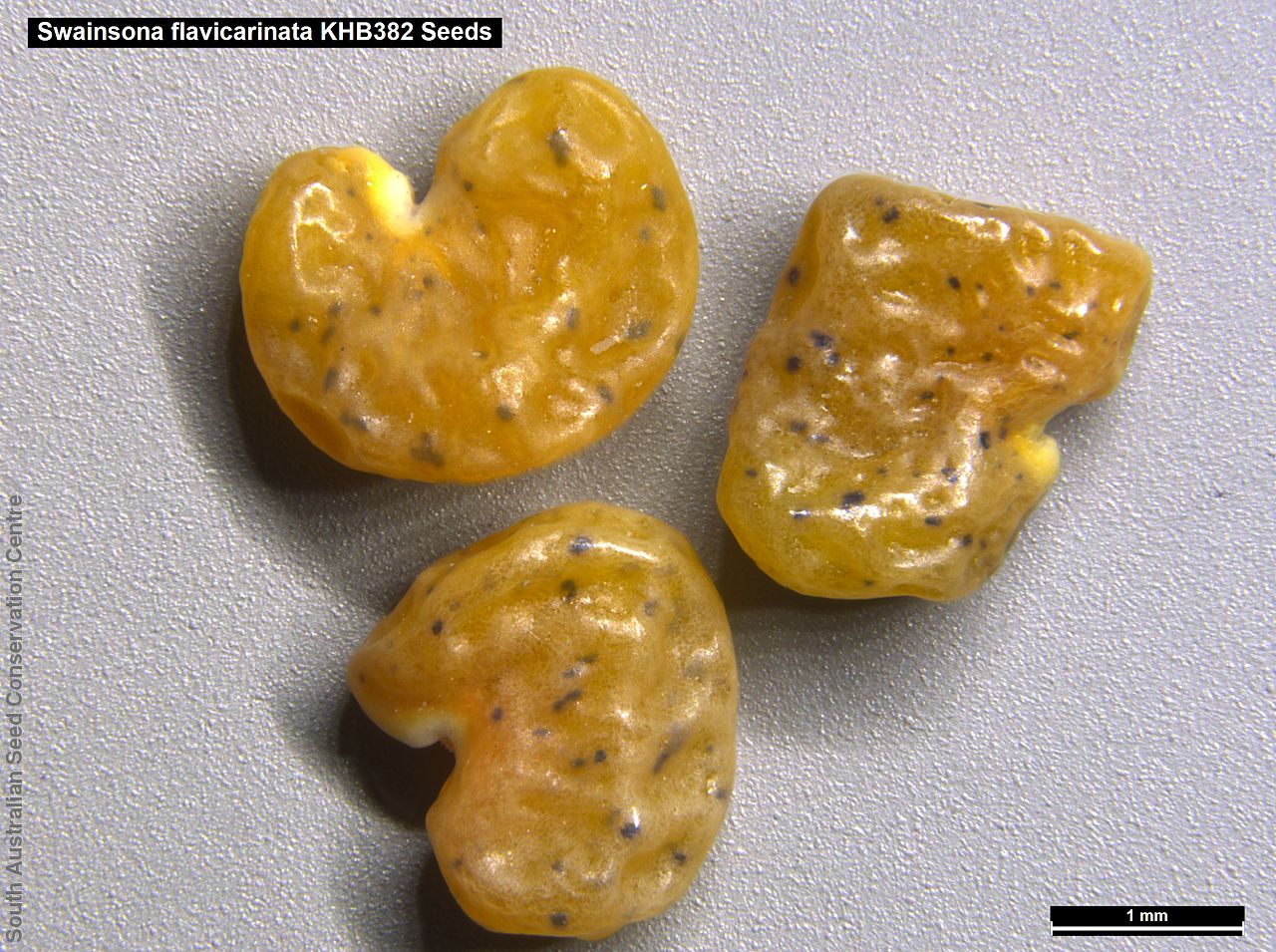
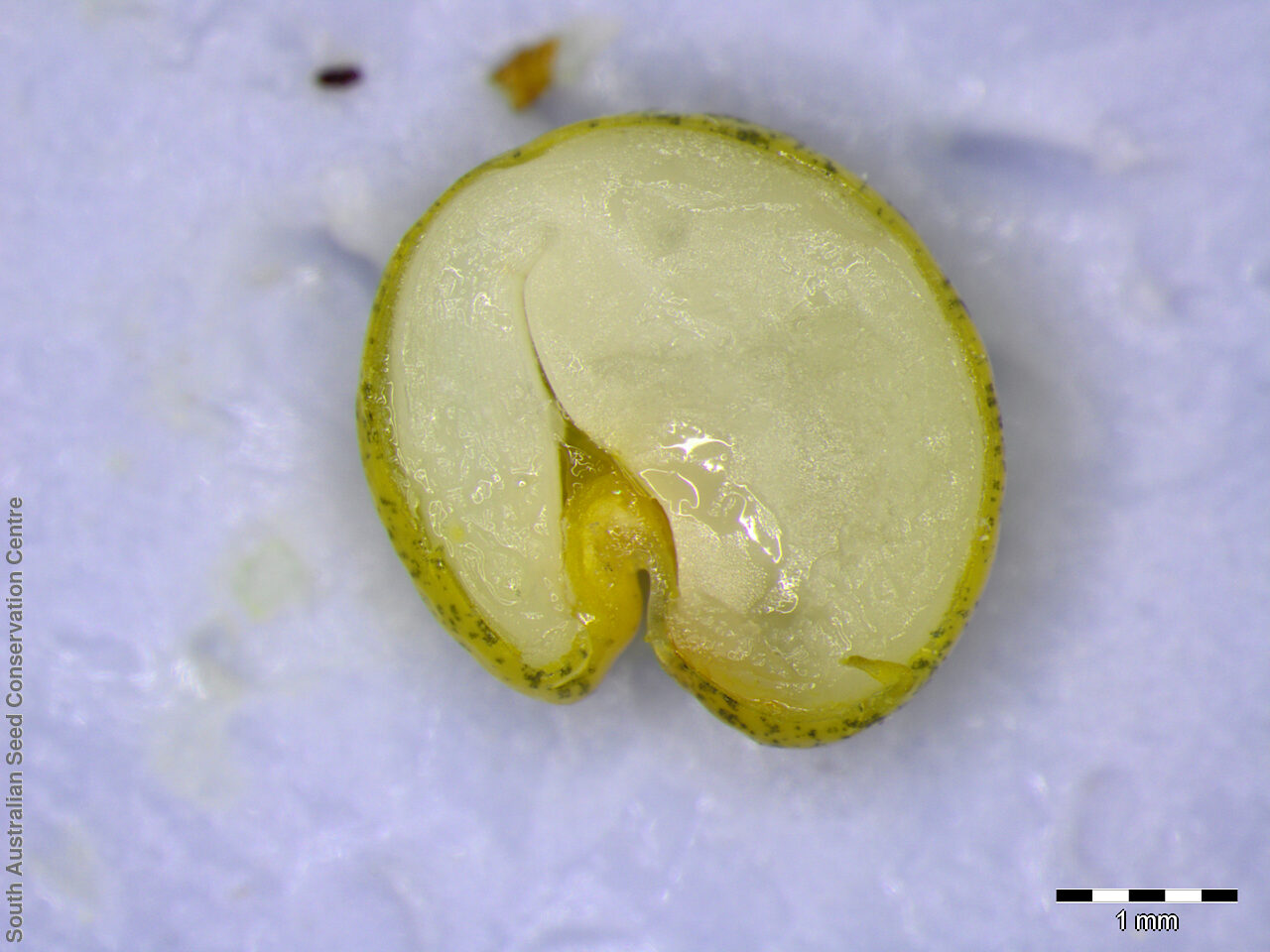
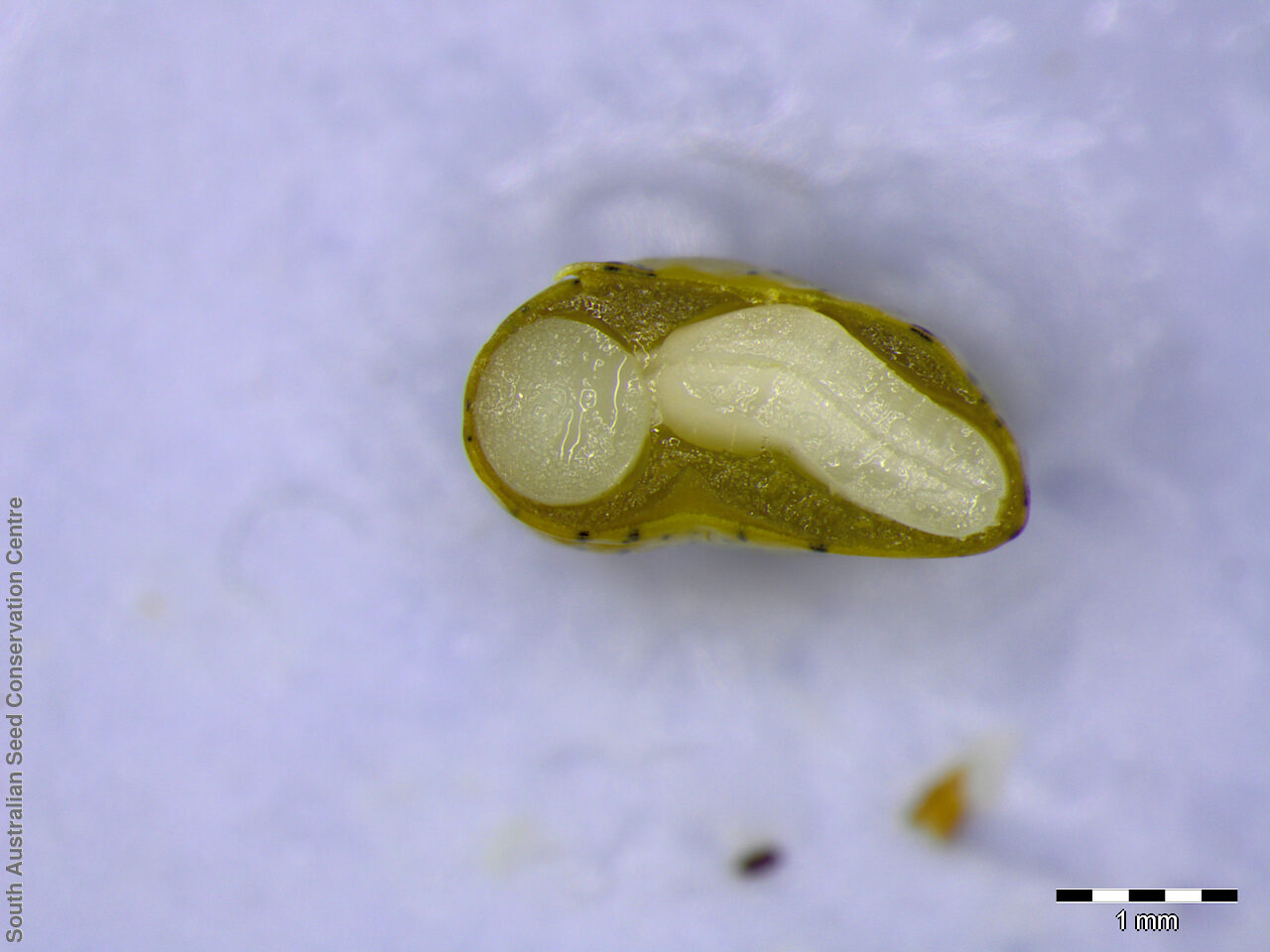

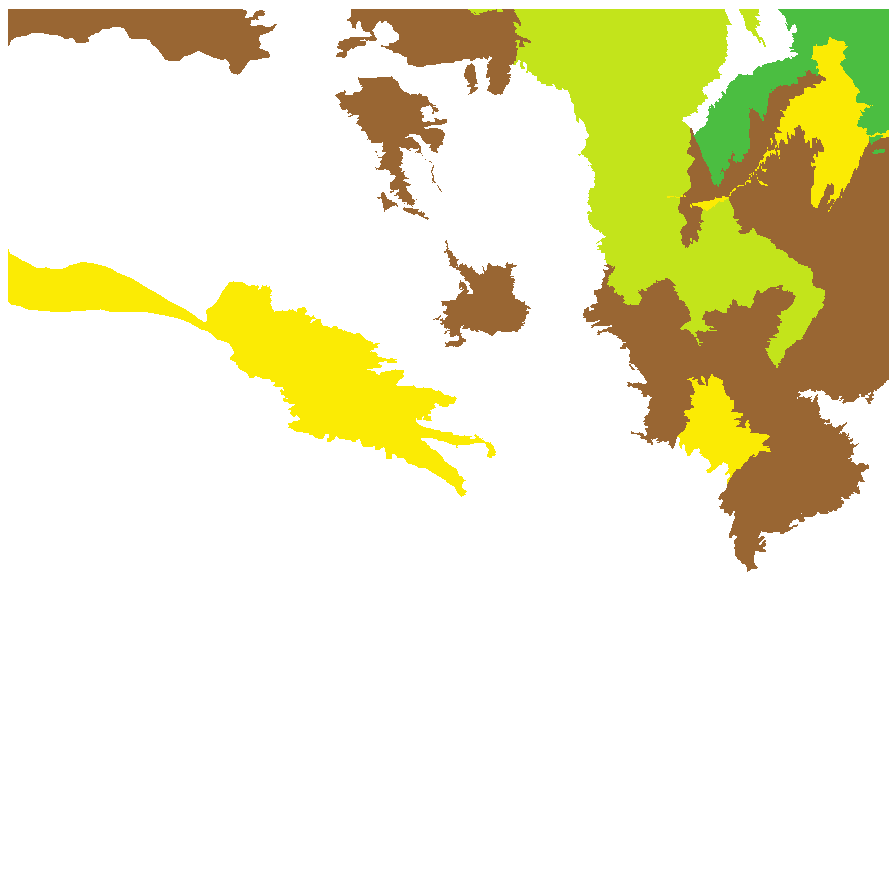
Botanical art
Etymology
Swainsona named after Isaac Swainson (1746-1812, an English scientist and horticulturalist who had a private botanic garden near London. Flavicarinata from the Latin 'flavus' meaning yellow and 'carina' meaning a keel; referring to the yellow keel of the species.
Distribution and status
Found usually in deep red sand in watercourses and floodplains in inland South Australia. Also found in Western Australia, Northern Territory, Queensland and New South Wales. Native. Common in South Australia. Common in Northern Territory. Uncommon in the other States.
Herbarium regions: North Western, Lake Eyre, Nullarbor, Gairdner-Torrens, Flinders Ranges, Eastern
NRM regions: Alinytjara Wilurara, Eyre Peninsula, South Australian Arid Lands
AVH map: SA distribution map (external link)
Plant description
Prostrate or ascending perennial to 45cm high with many hairy stems arising from a taproot. Leaves 2�6 cm long with 5-9 obovate leaflets, upper surface hairless and lower surface loosely densely pubescent. Flowers red or pink with 3�15-flowers on a stalk. Fruits are pod hairy obovoid to wide-oblong, 10�15 mm long. Seeds are yellow brown mottled reinform seed to 2.5mm long and 2mm wide with a wrinkled surface. Seed embryo type is bent.
Seed collection and propagation
Collect seeds between September and November. Collect mature pods. Mature pods can be found lying on the ground next to the plant containing hard seeds. When dried the pods become hard and difficult to open. Use a rubber bung to rub the pods or break the pods open with your fingers to dislodge the seeds. Use a sieve to separate the unwanted material. Store the seeds with a desiccant such as dried silica beads or dry rice, in an air tight container in a cool and dry place. From one collection, the seed viability was high, at 95%. This species has physical dormancy that need to be overcome for the seed to germinate (e.g. nicking or softening the seed coat).
| Location | No. of seeds (weight grams) | Number of plants | Date collected | Collection number Collection location | Date stored | % Viability | Storage temperature |
|---|---|---|---|---|---|---|---|
| MSB | 2,800 (7.87 g) | 50+ | 29-Sep-2007 | DJD884 Lake Eyre | 100% | ||
| BGA | 1,100 (4.13 g) | 5 | 23-Nov-2010 | KHB382 Flinders Ranges | 1-Jan-2012 | 95% | -18°C |
Number of plants: This is the number of plants from which the seeds were collected.
Collection location: The Herbarium of South Australia's region name.
% Viability: Percentage of filled healthy seeds determined by a cut test or x-ray.